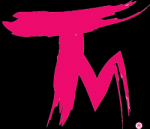The buzz cut (寸头发型| cùntóu fàxíng in Chinese) is, well, buzzing among China’s cool girls. From challenging societal beauty standards to a penchant for low-maintenance hairstyles… Time for Temper to explore this newest tantrum in the world of China Beauty.
Related
The buzz cut has a deep history and cultural significance for Chinese women. Historically, it was a sign of mourning after the loss of a loved one and was often accompanied by other mourning customs such as wearing white clothing. The practice dates to ancient times and continued well into the 20th Century. But in the Roaring Twenties 2.0, the buzz cut has taken on new meaning for Chinese women.
Traditionally, long hair is considered a symbol of femininity in Chinese culture. Women were expected to keep their hair long and well-groomed as a sign of respectability and social status. But more and more women are now breaking away from these traditional beauty standards.
The buzz cut has become a symbol of empowerment, with many women (Gen Zs and millennials alike) choosing to shave their heads as a way of rejecting traditional beauty standards and societal expectations. This trend has been particularly popular among women who see it as a way of challenging gender norms and promoting equality.
Others simply find it practical and low maintenance.

This netizen who goes by 七七仙女 ( qī qīxiānnǚ| “seven seven fairy”) had been growing her hair for 30 years and then decided to shave it al off–posting the whole process on social media. The result: Ab. Fab. Her message to viewers was to “taste, try and experience life to the fullest.” Image: Screenshot from Chinese Instagram slash e-commerce platform 小红书 ( xiǎohóngshū| Little Red Book)–#寸头发型
Lucky for this author, one of her colleagues at English newsweekly Beijing Review happens to have a buzz cut–and belongs to the latter category. So I tippytoed down to the third floor, where millennial YY (just going by her initials here) had the following to say about her hairstyle:
“I had short hair in high school and getting a buzz cut was something that occurred to me occasionally. When I was in college, I tried growing my hair long a few times, but it took so long I’d always end up with shoulder-length hair. And having shoulder-length hair means going to the hairdresser often—once you’ve actually found one who gets your style, that is.” Point taken.
“Summing up, the pandemic finally made me go for the buzz cut,” she continued, “It was summer, hair salons were closed, and it was hot and bothersome. I just used my husband’s head shaver and it all felt sooo cool and clear after I was done! My sister always says the buzz cut is the one style that fits me best. My husband loves it too and all my friends think it’s cool. Simple as that.”
Related
Close-Up: From Hair to Eternity, Tibetan Braids Rule the Waves
Last year, she also rocked a completely bald look at one point–“I’d always wanted to see what I’d look like with a bald head–but decided to set the shaver’s settings back to
Unlike YY, whose no-nonsense attitude we definitely dig, many Chinese women who have chosen to sport a buzz cut cite reasons such as wanting to challenge societal norms and express their individuality. Some also see it as a way to take control of their own appearance and reject the pressure to conform to traditional beauty standards.
As Chinese society continues to grapple with beauty standards, buzz cuts are just one of the many trends helping women push back, with many posting their “#buzzcut” hair transformations on social media platforms such as Chinese Instagram slash e-commerce platform 小红书 ( xiǎohóngshū| Little Red Book) and entire groups dedicated to the hairstyle and devoted to answering women’s most pressing questions (e.g., “what shaver setting should I use?” what clothing or makeup works best?”) before breaking out the hair clippers.
In March 2022, a hashtag called “embrace beauty without makeup” went viral on domestic social media platforms, where women posted images of themselves with no makeup, according to online magazine Sixth Tone.
Before that, in 2020, social appearance anxiety—in the wake of trends such as the “A4 waist” and the “belly button challenge”—triggered fierce debate across Chinese social media, particularly among young women. Ever since many have consciously ditched their lipstick and high heels in a bid to embrace individuality.
The number of Chinese body-positive influencers–like Scarlett Hao, too, has been on the rise since that same year, having had it with the distorted, filtered images coming at them from every pixel on their super-app screen. From WeChat to Douyin (China’s TikTok) and Weibo (the country’s Twitter equivalent), they refuse to conform to social media’s perception of the perfect body.
And that’s the thing about style… Those who have it share one thing: originality.
And that wraps up the short ‘n sweet on China’s latest beauty buzz.
For now. #tobecontinued
FEATURED IMAGE: COLLAGE
SPOTTED A FASHION FAIL OR HAVE SOMETHING TO ADD? PLEASE LET US KNOW IN THE COMMENT SECTION BELOW OR EMAIL US AT INFO@CHINATEMPER.COM
© THE CHINA TEMPER, 2023. ALL RIGHTS RESERVED.
DO NOT REPRODUCE TEMPER CONTENT WITHOUT CONSENT -– YOU CAN CONTACT US AT INFO@CHINATEMPER.COM
- Pink Hair & “Pain Cities:” China’s Ultimate Fan Fashion Codes - December 7, 2025
- The FOMO Economy: How Pop-Ups & Crossovers Are Conquering China’s Consumer Heart - December 1, 2025
- School Uniforms in China: Ditching the Drab, Finding the Fab - October 25, 2025
